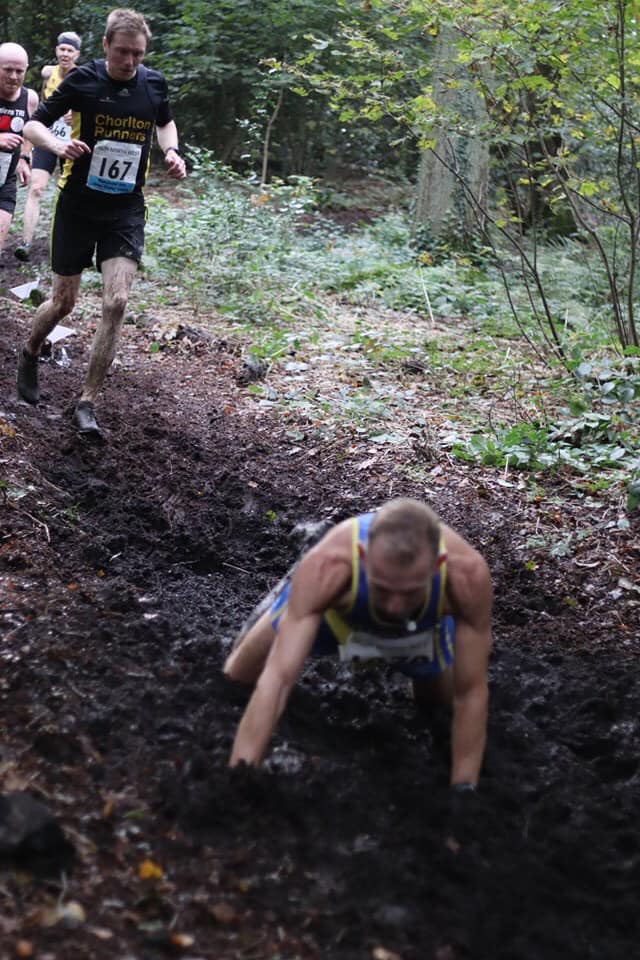Life may be a little downhill at the moment but I promised you an article on running downhill.
Why do we need to think about downhill running?
When running downhill, your body is fighting gravity. The natural reaction is to slam on the brakes by leaning back and striking through the heels. This motion can actually be damaging to muscles and joints. It has been said that a runner comes down with 2.5 times their body weight, and that increases 14 percent on the decline. Wen running downhill, a lot of people are inclined to let their form go or to lean back. Unless you’re running for the pure enjoyment of running downhill and it’s not a sustained activity, don’t do either of those. If the grade of the hill is too steep to run with good form, walk. If you change your form and lean back when running downhill, you can put too much pressure on the lower back and hip flexors.
Though our quads are worked during running uphill, downhill running recruits the quads to do almost all the work. It’s difficult to simulate the demands of downhill running without actually running down a hill, which is a good reason why hill training can be so beneficial to runners.
So to get started, run on softer surfaces such as grass or trails. You can move to the road after a few training sessions. Don’t practice on too steep of a hill. Look for a hill that has no more than an 8% drop (and start out even less than that, about 3-4%). Anything steeper can cause excessive impact and may increase the risk of injury. To properly run downhill, you need to keep the same form you use for running uphill. You want to have a slight lean forward, shoulders over your hips, keep your stride length short and your cadence up, and your arms bent at a 90 degree angle at your sides.
A big mistakes runners make on declines: is locking their knees and striking with their heels in a bone-rattling braking motion. Rather than trying to slow yourself down, take advantage of gravity’s influence on quicker leg turnover. At the same time, shorten your stride to maintain control and keep your body from falling forward.
So try to land midfoot, and maintain proper posture resist the urge to brake, which will cause you to lean back. You should lean forward slightly from the ankles, but you need to keep your core engaged and your body aligned. It’s all about striking a balance between taking advantage of the “free speed” downhills offer without becoming a flailing windmill with no control. If you watch professional runners, they look as if they are effortlessly attacking downhills with perfect strength and poise. With some practice, this is something just about any runner can master.
Downhill running engages your lower abs and works your quads. The quads do most of the work controlling momentum on the downhills, so should you experience soreness after a training session or race that was downhill-heavy, the front of the thigh is where you’re most likely to feel it. A lot of this muscle soreness is preventable if you are not only training on the downhills, but also have proper form when doing so. It can be learned with practice, just like running on any surface. As mentioned before, try to keep a light, quick turnover and don’t ride the brakes! Learn to accept the free gift of gravity and go with it; by keeping your cadence quick, you’ll be less likely to overstride on the downhill and land with your leg too far out in front. Stay perpendicular to the road or lean forward a little bit from the ankles. use your arms to find the balance, so letting them flail a bit is OK. Take care to avoid starting to heel-strike on the way down. Keeping high cadence should be easy to maintain on the downhill, but still stay focused to avoid pounding.”
Keep your strides short and quick if you’re just starting to try downhill running. To gain speed, lengthen your stride when you feel comfortable. Don’t gallop by taking huge strides or leaping downhill. Always remain in control. Use your arms to your advantage, and allow them to help you gain your balance. Don’t feel that you have to keep them in your normal running form; you can stretch out your arms if it helps you stabilise.
So remember:
- Running downhill results in more ground force, in other words landing harder. As soon as you land with your heel it creates a brake effect, which jars the entire body.
- Running downhill will cause the microtears, which will repair themselves stronger than before and prepare your body to handle the downhills during race situations.
- But remember to reduce or eliminate your downhill training the last two to three weeks before your race. As with any type of intense training, your body needs time to rest and recover.
Take care. Be warned!




